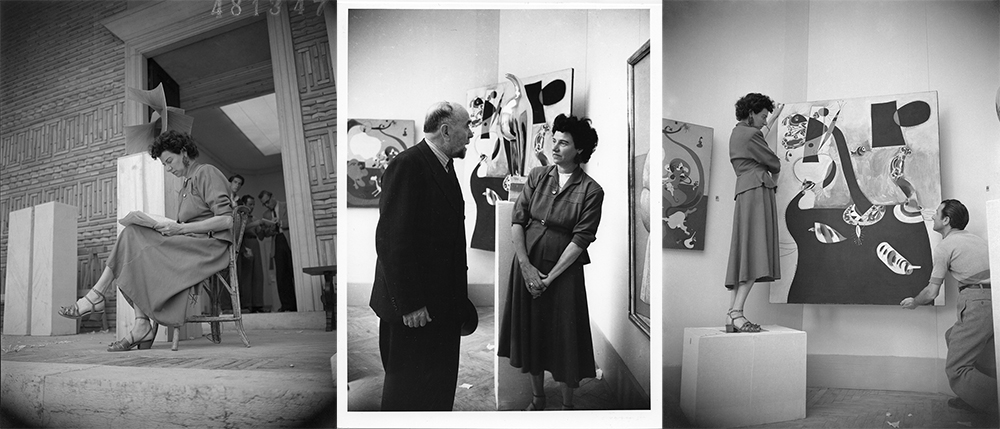ART CITIES:Venice- 1948 The Biennale of Peggy Guggenheim
On the artistic level, the first Biennale (1948) after WWII went down in history as one of the most interesting editions of the institution, although it only had a few national participations due the consequences of the war, the 24th International Exhibition marked the beginning of the systematic presentation of the historic movements of Modernism and the international Avant Garde in the form of an historic-artistic review, as well as a scientific documentation of the art of the preceding years.
By Dimitris Lempesis
Photo: Peggy Guggenheim Collection Archive
Year 2018 marks the 70th anniversary of 24th Venice Biennale, the most significant events of this Biennale included the organisation of the first solo exhibition of the then 65-year-old Picasso in Venice, curated by the Italian artist Renato Guttuso, the tribute to Impressionists and Post-Impressionists curated by the art historian Roberto Longhi, which took place in the spare space in the German pavilion, the award offered to the French Cubist Georges Braque and finally the presentation in the empty Greek pavilion (due the civil war) of Peggy Guggenheim’s collection (136 artworks by 73 artists), which included art movements from Cubism to Surrealism, curated by the Italian art historian Giulio Carlo Argan. For the first time in Europe, works by artists such as Jackson Pollock, Arshille Gorky and Mark Rothko were exhibited. The following year, Peggy purchased Palazzo Venier dei Leoni which, to this day, hosts her collection, one of the most important in Italy of European and American art from the first half of the 20th Century. In order to commemorate this milestone event in the history of 20th-Century art, the Peggy Guggenheim Collection presents an homage exhibition “1948: The Biennale of Peggy Guggenheim”. The exhibition partially recreates the setting of the Greek pavilion through documents, photographs, letters, and for the first time a three-dimensional model of the pavilion installation. The layout had been designed by the distinguished Venetian architect Carlo Scarpa, who collaborated with the Biennale from 1948 to 1972. Selected works from the Peggy Guggenheim Collection are on view in the exhibition together with others donated by Guggenheim, such as “Composition No. 113” (1939) by Friedrich Vordemberge-Gildewart and “Composition” (1936) by Jean Hélion, now in the collection of the Tel Aviv Museum of Art. These gifts have not been seen in Venice since the 1950s. In 1948 the presentation of the collection offered the European public the opportunity to catch up with the latest artistic developments and to see the New York artists who would dominate the art scene through the 1950s. The present exhibition offer the opportunity to re-examine this watershed event in Guggenheim’s career and in the history of the Biennale.
Info: Curator: Gražina Subelytė, Peggy Guggenheim Collection, Palazzo Venier dei Leoni, Dorsoduro 701, Venice, Duration: 25/5-25/11/18, Days & Hours: Mon & Wed-sun 10:00-18:00, www.guggenheim-venice.it


